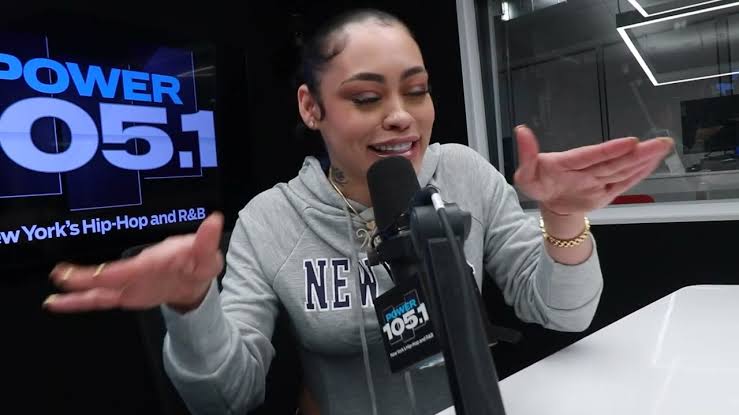In the digital age, viral videos have become a powerful cultural force, shaping public discourse, launching trends, and sometimes sparking intense controversy. As we navigate through 2025, the landscape of viral content continues to evolve, driven by advanced AI tools, immersive technologies, and shifting societal values. From light-hearted challenges to serious debates about ethics and privacy, viral videos are more than just fleeting entertainment—they are reflections of our collective consciousness. This article delves into the most significant viral video trends of 2025, examining their impact on society, the controversies they’ve ignited, and what they reveal about the future of digital content.

major galore viral video
The Rise of AI-Generated Viral Content
How AI is Shaping Viral Trends
Artificial Intelligence has revolutionized content creation in 2025. Tools like ChatGPT-5 and Sora enable users to generate hyper-realistic videos and memes with minimal effort. AI-generated influencers, with their flawless aesthetics and engaging personalities, are amassing millions of followers, blurring the line between reality and simulation .
One of the most popular trends is the “AI Time-Travel” challenge, where users see themselves transformed into different historical eras. This trend not only showcases technological prowess but also taps into humanity’s fascination with history and identity. The ease of personalization has made these videos highly shareable, fueling their viral spread .
Ethical Considerations
However, the rise of AI content has sparked debates about authenticity and dependency. The “No AI for a Week” challenge emerged as a counter-movement, encouraging users to disconnect from AI tools and reconnect with human creativity. This trend highlights growing concerns about over-reliance on technology and the potential loss of genuine human expression .
Viral Controversies: When Trends Spark Backlash
The Dark Side of Virality
Not all viral videos are met with enthusiasm. In August 2025, a video featuring K-pop maknaes (youngest members) from fifth-generation groups triggered widespread backlash. The video, which showed interactions between idols as young as 14, raised concerns about child labor and the exploitation of minors in the entertainment industry. Critics argued that these children should be in school rather than subjected to the intense pressures of K-pop fame .
The backlash underscores a broader societal unease with the normalization of young celebrities in high-stress environments. Social media users expressed outrage, noting that the industry often prioritizes profit over the well-being of its youngest stars .
Political and Predictive Controversies
Another video that stirred significant controversy was a clip allegedly from The Simpsons, predicting the death of former President Donald Trump in August 2025. The video, which resurfaced amid Trump’s diagnosis of a vascular condition, spread rapidly across social media, garnering over 2.5 million views on Instagram alone .
Despite its popularity, the video was debunked as a mash-up of unrelated clips with added voiceovers. This incident highlights the power of deepfakes and edited content to mislead the public. It also reflects the ongoing fascination with The Simpsons’ supposed predictive abilities, even when evidence is lacking .
The Role of Platforms and Technology
AR and VR: The New Frontiers
Augmented and Virtual Reality have taken viral challenges to new levels of immersion. With devices like Apple Vision Pro and Meta Quest 3, users participate in experiences such as the “Virtual Outfit Swap” challenge, where they digitally try on outfits from around the world. These trends are not only entertaining but also showcase the potential of AR/VR to transform social interaction .
TikTok’s Dominance
TikTok remains at the forefront of viral trends, particularly with AI-generated music and dance challenges. The platform’s algorithms, combined with AI choreography tools, have made it easier for users to create and participate in viral dances. The “AI Shuffle Challenge”, where an AI selects unique dance moves for users to follow, exemplifies this synergy between technology and creativity .
The Impact on Society and Culture
Positive Trends: Kindness and Connection
Amid the controversies, some viral trends promote positivity and social connection. The “Random Stranger Acts of Kindness” trend, for example, features heartwarming videos of people helping strangers and capturing their reactions. Brands have sponsored these initiatives, turning viral content into force for good .
Nostalgia and Identity
Flashback challenges have also gained traction, with users revisiting old photos and recreating past viral videos. The #GlowUpRewind trend, where people share their transformations from 2015 to 2025, taps into nostalgia while celebrating personal growth .
FAQs
What makes a video go viral in 2025?
Viral videos in 2025 often leverage AI-generated content, AR/VR immersion, or emotional resonance (e.g., nostalgia or kindness). Platforms like TikTok and Instagram amplify these trends through algorithms that prioritize engaging and shareable content .
Are AI-generated videos ethical?
While AI tools democratize content creation, they raise ethical concerns about authenticity, privacy, and dependency. The #NoAIChallenge reflects a growing movement to address these issues .
How did the K-pop maknae video spark backlash?
The video highlighted the prevalence of young idols in the K-pop industry, leading to debates about child labor and the ethical treatment of minors in entertainment .
4. Was The Simpsons‘ prediction about Donald Trump real?
No. The viral video was a edited mash-up with no basis in an actual episode. It exemplifies how deepfakes and edited content can spread misinformation .
What are the positive viral trends in 2025?
Trends like #SecretGiftDrop (acts of kindness) and #GlowUpRewind (nostalgic transformations) promote positivity and social connection .
Conclusion
Viral videos in 2025 are a testament to the incredible power of digital media to entertain, connect, and sometimes disturb us. As AI and immersive technologies continue to evolve, they will undoubtedly unlock new creative possibilities—but they also demand greater critical engagement from viewers. The controversies surrounding videos like the K-pop maknae clip or the Trump prediction remind us that virality comes with responsibilities: to question what we see, to consider the impacts on vulnerable individuals, and to harness these tools for positive change. As we move forward, the future of viral content will be shaped not just by technology, but by the values we choose to prioritize.